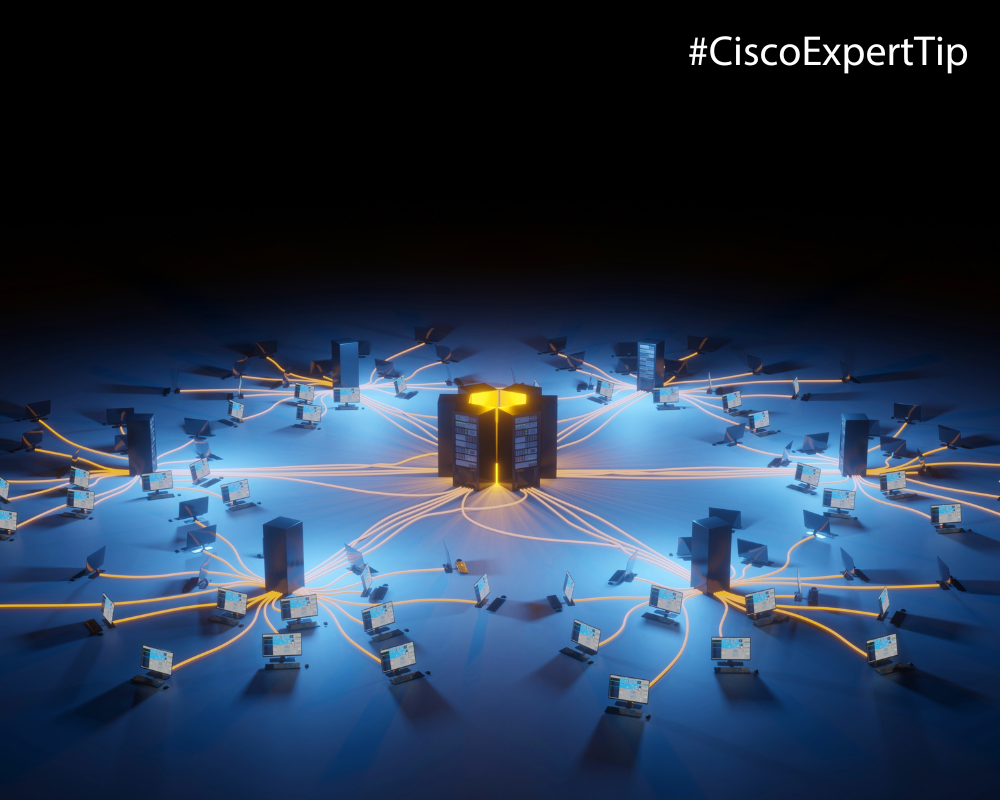
Corporate network traffic is growing at lightning speed, and the number of users and connected devices is dramatically increasing. Applications and services are moving to the cloud. This all puts pressure on networks built on traditional architecture, which are reaching their limits. Software-defined networks provide a way to streamline deployment, simplify network management, and save on hardware and bandwidth expenditures.
Software-defined networks emerged as a response to digitalization, which has spread almost to all parts of business. Companies are now widely open to the outside environment and require the close internal and external integration of services and applications. (This is typically the case when using Software as-a-Service [SaaS] tools such as MS Office 365, Azure, Webex, and CRM.) Also, employees no longer spend eight hours at their desk in the office; they often access the company from home or other remote locations. When everyone connects to applications through the company’s perimeter, the situation can quickly become unbearable.
Traditionally designed networks are reaching their limits, especially in terms of scalability. Software-defined Network (SDN) technology represents a fundamental change in the way networks are managed. An SDN separates the data layer from the control layer. All network instructions, security policies, user access settings, and updates are applied in the control software-defined layer. Command distribution throughout the network is done by the “software orchestrator” tool. In practice this means that the physical (hardware) corporate network only needs to be built once. Its topology is then defined by software, and this setting can be easily changed. This concept brings several benefits:
Virtualization (i.e. defining by software) delivers benefits for all network components, including transmission routes (WAN), corporate local area networks (LAN), and data centres. In all these areas, it solves several specific problems associated with conventional networks.
Today’s key task for WANs is to optimize the use of increasingly popular SaaS tools. Distributing the data associated with these programs to branch offices or to employees working from home can be a strain on networks, both in terms of bandwidth and costs. With a software-defined WAN (SD WAN), administrators can define which part of the traffic can be routed to or from the branch directly through the internet and which part can remain reserved for the corporate network. Regardless of whether it is a branch office, a home computer, or a laptop, the orchestrator sets access rules for the entire network. If a rule is changed or updated, or a new service is introduced, the change is immediately applied throughout the entire network.
And then there are the benefits in cost. The network detects which application the user is using and what its requirements are for transmission quality, bandwidth, and security. Based on pre-defined rules, the orchestrator decides which of the communication routes should be used for the traffic. The data flow can then be effectively divided between the internet and the more expensive MPLS lines, which would only be used for critical information.

The main advantage of software-defined LAN (SD LAN) is its ability to centrally control access rules for people accessing the system from different locations (e.g. headquarters, branch offices, and home office), which lets companies have the same applied authorization policies throughout the entire infrastructure. Users carry over their unique identities, which determine the information and services they are allowed to access throughout the network regardless of their current location. An orchestrator lets these policies be changed or updated from a single place.
An important added value is the ability to collect, store, and evaluate telemetry data, and then access it all from one place. This gives the company a real-time and retrospective view of data traffic, including more effective identification and the elimination of any technical and operational problems. Thanks to this major functionality, administrators can predict and prevent many operational and security issues.
With software-defined data centres (SDDCs), the orchestrator enables the automated configuration of individual communication elements in an environment that may include single and multiple sites as well as the cloud. Orchestration, automation, and the separation of communication routes for data and traffic management open up these possibilities:
These benefits particularly apply to companies that need to combine data security with external services and continuous application development.
SDNs are one of the biggest innovations in IT in recent years. They streamline and speed up network management and free the hands of IT specialists, who can then focus on tasks with a higher added value instead of routine manual work.
We are in the process of finalizing. If you want to be redirected to our old version of web site, please click here.